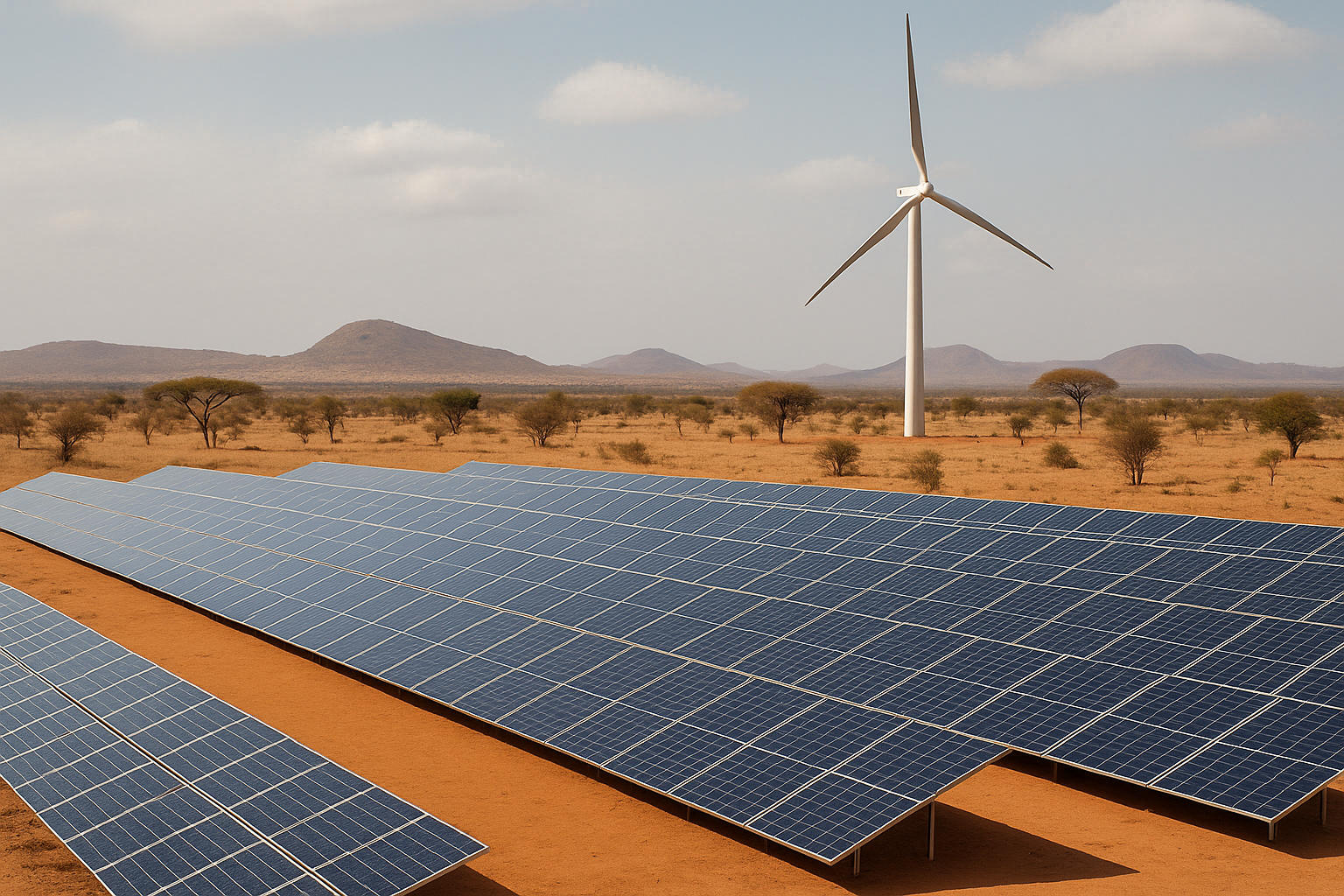ECOWAS nations hold billions in untapped green hydrogen potential
Countries like Niger and Mali are positioned to become green hydrogen hubs due to their low LCOH, high production density, and strong carbon mitigation potential. Cape Verde’s wind advantage gives it an edge in alternative pathways.

With international interest in hydrogen surging, ECOWAS nations have an opportunity to leapfrog fossil-based development and become leaders in low-carbon energy. A new study titled "Exploring the Potential of Solar Photovoltaic and Wind-Based Green Hydrogen Projects in ECOWAS Region: Production, Cost, and Environmental Maps" published in Energy Exploration & Exploitation lays the groundwork for West Africa to become a major player in the global green hydrogen economy.
The research delivers a comprehensive geospatial and techno-economic analysis of hydrogen production across all 15 ECOWAS countries, focusing on solar and wind energy as the primary input sources. The findings underscore the region's vast but unevenly distributed renewable energy resources, economic feasibility, and climate mitigation potential, with standout performance from Niger, Mali, and Cape Verde. The research aims to support clean energy transitions, regional energy security, and investment decision-making through robust modeling of hydrogen production potential, costs, and emissions reductions.
How viable is green hydrogen production in ECOWAS?
The study evaluates the techno-economic viability of green hydrogen production in ECOWAS by modeling electricity generation from 10 MW solar PV and wind turbine installations per country. Using advanced simulations, it calculates annual electricity output, hydrogen production density, levelized cost of hydrogen (LCOH), and CO₂ mitigation potential.
Niger emerged as a frontrunner in solar energy-based hydrogen, generating up to 17.57 GWh annually and achieving the lowest LCOH at $3.23/kg. The country’s arid climate and high solar irradiance also translated into the highest hydrogen production density (6.76 kg/m²) and carbon mitigation capacity (119.08 kg/m²).
Wind-based hydrogen production tells a different story. Cape Verde, with exceptional wind speeds reaching 8.80 m/s, achieved the region’s highest wind electricity output at 53.92 GWh and the lowest wind-based LCOH at just $2.56/kg. It also led the wind/hydrogen category in hydrogen production density (1.07 kg/m²) and CO₂ mitigation potential (18.87 kg/m²), highlighting its strategic advantage.
Mali and Burkina Faso demonstrated balanced capabilities in both solar and wind generation, enabling hybrid system potential. Meanwhile, countries like Guinea, Liberia, and Sierra Leone showed lower production capacity and high LCOH values, pointing to the need for targeted interventions and technology support.
What are the economic and environmental trade-offs?
The researchers analysed LCOH, which accounts for capital expenditure, operations, maintenance, component replacement, and hydrogen output. While solar-based hydrogen production generally showed more cost-effectiveness across most countries, wind energy offered economic viability in Cape Verde, Niger, and Mali.
Cape Verde’s wind-based LCOH was significantly lower than that of solar PV in countries like Côte d’Ivoire ($4.02/kg) and Liberia ($4.26/kg). Conversely, Guinea’s LCOH from wind-based hydrogen reached a prohibitive $11.45/kg due to limited wind resources, compared to $3.53/kg from solar.
The study also performed sensitivity analyses, showing that higher electrolyzer efficiency drastically lowers LCOH. At 95% efficiency, Mali’s solar hydrogen LCOH could fall to $2.69/kg, and Niger’s to $2.55/kg. The degradation rate of equipment further affects long-term costs. A 10% degradation rate raises LCOH by up to 15% for wind systems and 12% for solar systems. Discount rate fluctuations, used to model financial risk, also significantly impact costs, with LCOH values nearly doubling between 2% and 12% interest rate scenarios.
Environmentally, solar-based systems consistently outperformed wind in CO₂ mitigation. Niger, Burkina Faso, and Mali lead in emissions savings, with over 100 kg CO₂/m² annually. These figures offer crucial leverage for carbon credit trading, especially as global markets evolve under mechanisms like the Paris Agreement’s Article 6.
What strategic actions can accelerate regional green hydrogen leadership?
The findings carry strategic weight for policymakers, investors, and international development agencies. Countries like Niger and Mali are positioned to become green hydrogen hubs due to their low LCOH, high production density, and strong carbon mitigation potential. Cape Verde’s wind advantage gives it an edge in alternative pathways.
The study recommends hybrid renewable systems to maximize production and cost-effectiveness. It also highlights the importance of high-efficiency electrolyzers and water-efficient technologies. In desert-prone regions such as Niger and Mali, sourcing water through atmospheric extraction or solar-powered groundwater pumping can enhance project sustainability.
However, technical feasibility alone is not enough. The authors stress the need for improved infrastructure, sound investment climates, and regional cooperation. ECOWAS nations with abundant renewable resources could export hydrogen to neighboring countries with limited capacity, creating a new intra-African hydrogen economy.
The study has some limitations including reliance on standardized parameters, exclusion of other renewables like biomass or geothermal, and macro-level assessments that may miss micro-regional variations. The authors urge follow-up research to incorporate high-resolution data and investigate socio-economic impacts like job creation and energy access.
- FIRST PUBLISHED IN:
- Devdiscourse










